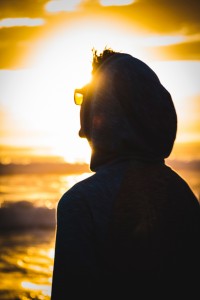There is no doubt to me that 2016 was a bad year for the world. The Syrian war, Brexit, Trump, 34000 people forced daily from their homes as a result of conflict or persecution, thousands of children at risk of starvation in Nigeria are only SOME of the things last year had in store for us.
It is hard to really feel the pain of this world. So we don’t. We turn away. We try to focus on our smaller scaled- seemingly more controllable lives. And understandably so… who could allow themselves to feel it? What if our heart simply breaks? We do our yoga. We visualize light around us and in us. And, often as a result, we distance ourselves more and more from the reality of this world.
But was that the point of yoga?
Does forming a spiritual understanding of the world -one where Light and souls exist- mean distancing ourselves from suffering?
When I asked my teacher this during my training, he said that we must learn to wear spiritual sunglasses. I liked the metaphor in that. He said that we have to be able to see a spiritual world where souls walk this Earth and Light is in everything AND to be able to put the sunglasses on and see the world that is in front of us, to feel the suffering and the reality that comes through. One would be a deeper reality and another would be a manifestation of reality. Both equally important to be able to see and feel as a yoga practitioner. We are to practice putting the glasses on and off.
Tara Brach talks about the Tonglen meditation from the Tibetan Tradition. This meditation is about listening to the cries of the world and responding to it. As you breathe in, you feel the pain of this world, as you breathe out you respond with love and care for it.
Now many would rightfully wonder what good would breathing in and out do to the suffering of the world? When seen as just a breathing in and out, I would say that this will do no good at all. But, as mentioned above, feeling the world’s suffering can be so overwhelming for most of us, that we shelter ourselves from it and become more self-centered and apathetic. So being able to feel and connect with both the suffering of other people and the love you have for this world, I believe can do a lot. We first must be able to connect with our reality, feel the pain and love in our hearts before we can respond by taking action.
We must know how to put these spiritual sunglasses on and off many times a day, keeping both realities close to heart, caring for both our human condition as our spiritual one.
Pinelopi specializes in Hatha Yoga. Her yoga Berlin Kreuzberg classes are open for and welcoming to beginners. She is a sivananda yoga teacher that also offers Berlin business yoga, pregnancy yoga, and private yoga classes for people struggling with chronic pain. All her yoga classes end in deep relaxation using yoga Nidra techniques. In her Berlin Chakra course, she uses the chakras as a base line to self-explore concepts such as forgiveness, group thought, letting go, and becoming self-aware of limiting beliefs.








